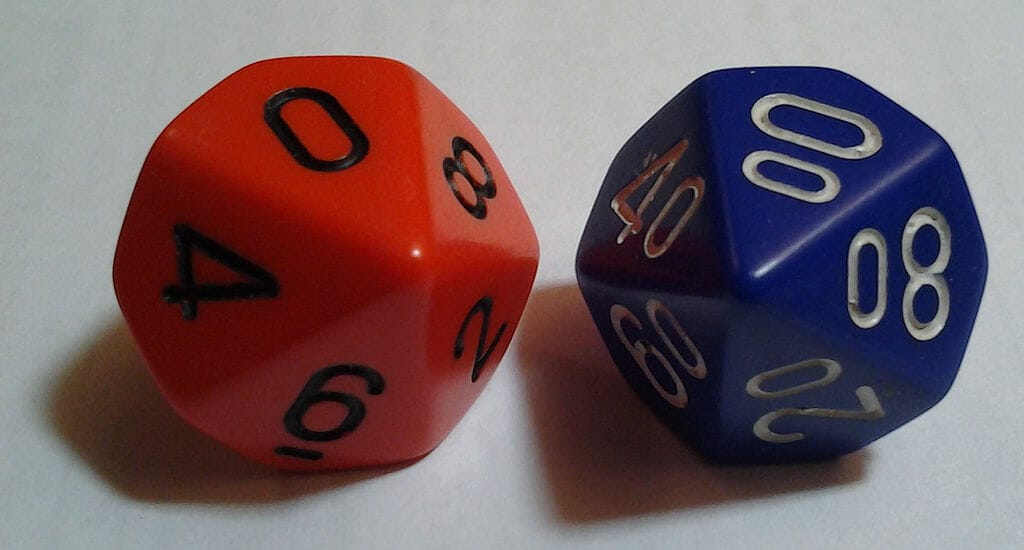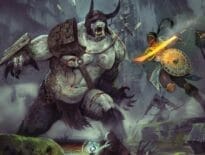There are actual 100-sided dice available for tabletop roleplaying games, but they’re not very popular. Why not? They’re large, and with so many faces they’re very smooth and can take a long while to stop rolling around. It can also be a challenge to work out which of the 100 faces is actually topmost.
Most gamers prefer to roll two ten-sided dice instead where one dice counts for the tens and the other for the singles.
So, what does this result mean?

0, 10 or 100?
This gamer recognises the result as a 100. That’s the rules as written in D&D 5e. Page 6 of the Player’s Handbook says;
Percentile dice, or d100, work a little differently. You generate a number between 1 and 100 by rolling two different ten-sided dice numbered from 0 to 9. One die (designated before you roll) gives the tens digit, and the other gives the ones digit. If you roll a 7 and a 1, for example, the number rolled is 71. Two 0s represent 100. Some ten-sided dice are numbered in tens (00, 10, 20, and so on), making it easier to distinguish the tens digit from the ones digit. In this case, a roll of 70 and 1 is 71, and 00 and 0 is 100.”
Straightforward? Not so, a discussion on the Facebook Group Dungeons & Dragons 5th Edition found no shortage of people who counted 0,00 as 10. An even larger number of people add alternative systems for putting a single dice with a tens dice together.
| Singles before tens | Ignoring the zeros |
|---|---|
| 0+10=10 0+30=30 1+00=1 1+10=11 2+50=52 5+70=75 6+00=6 9+90=99 0+00=100 | 0+10=1 0+30=3 1+00=10 1+10=11 2+50=25 5+70=57 6+00=60 9+90=99 0+00=100 |
So, how do some gamers look at 00,0 and get 10? The logic is this:
Double zeros on a D100 mean zero. 0 on a d10 means “10”. 10+0=10.
So, how would you actually roll a 100 in that system? By rolling 90 on the 00 dice, and a 10 on the single dice.
Many gamers stress, there’s no wrong way to run your game. If you have an alternative way to reading the dice and it works for you then good.
Other systems have their own rules and ways of the reading the dice too. It’s worth checking.
However, some D&D beginners in the Facebook group said they rolled the dice one at a time and stopped if the first dice rolled 00 because that would mean the result had to be 100. That’s not mathematically the case.
Creative Commons credit: D100 by Rlyehable.
Update: The “Singles before tens” table needed to be updated to show the alternative logic discussed in the Facebook group.


